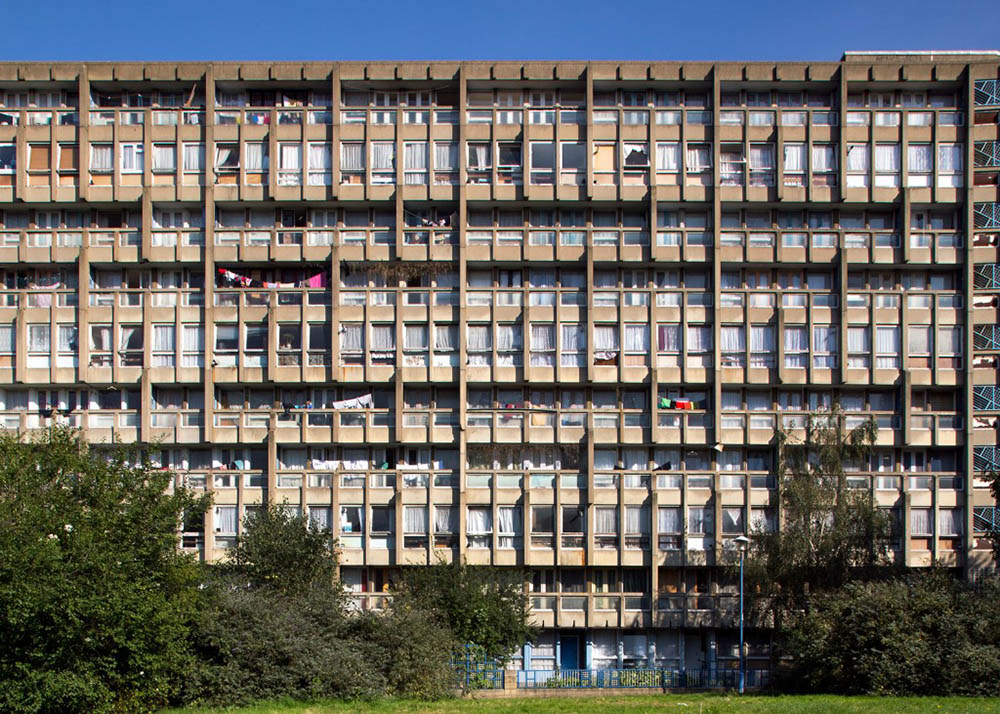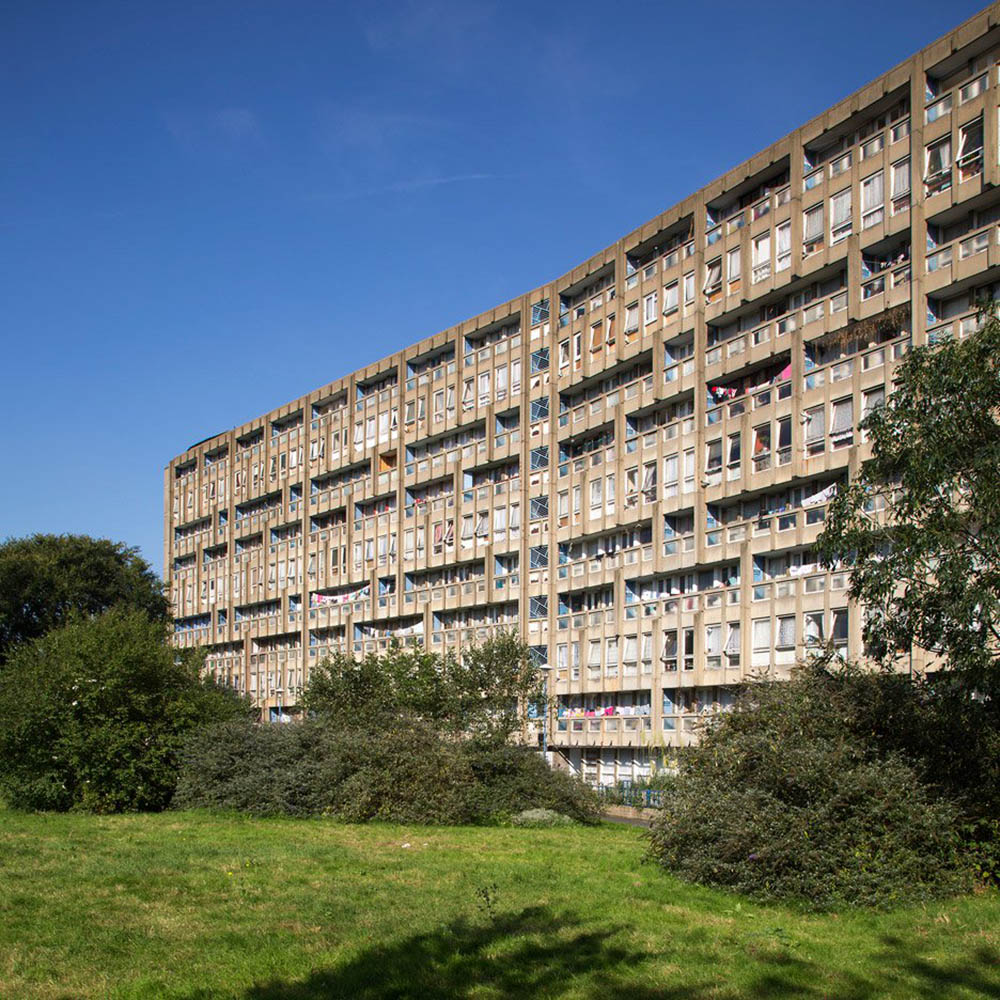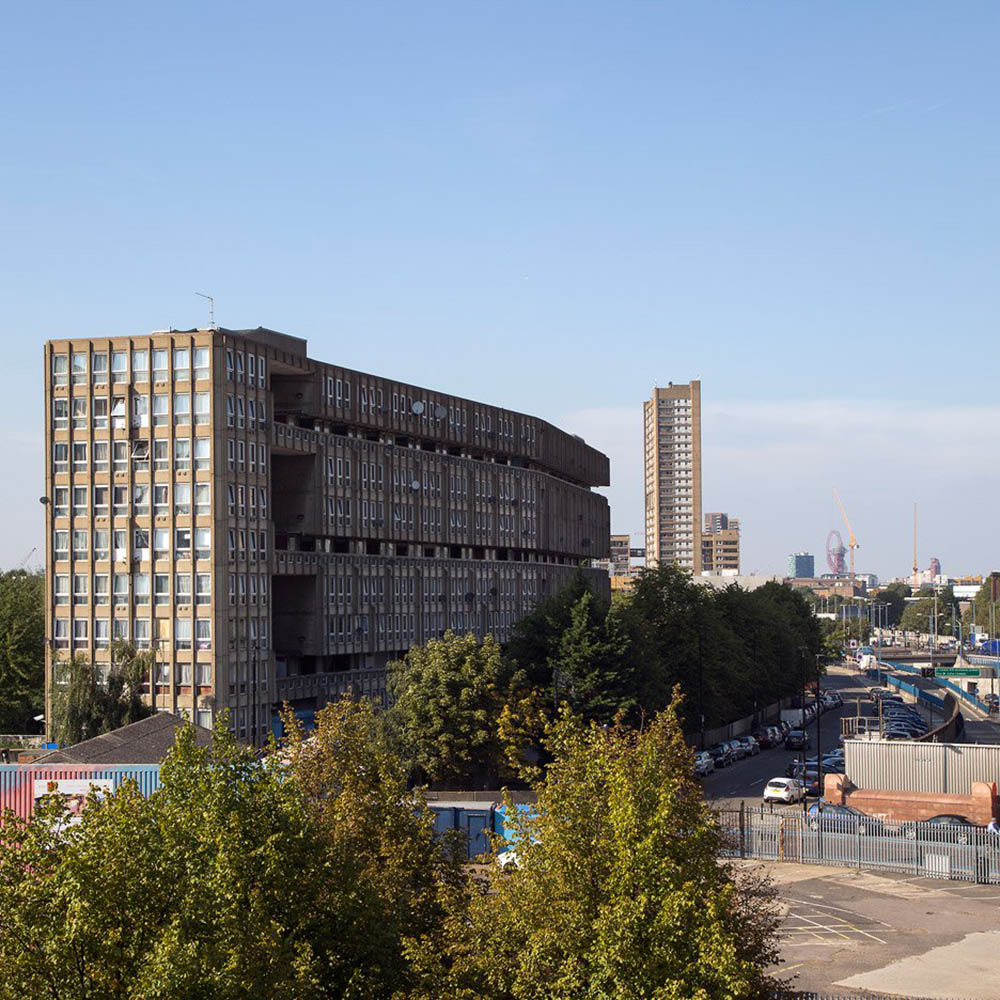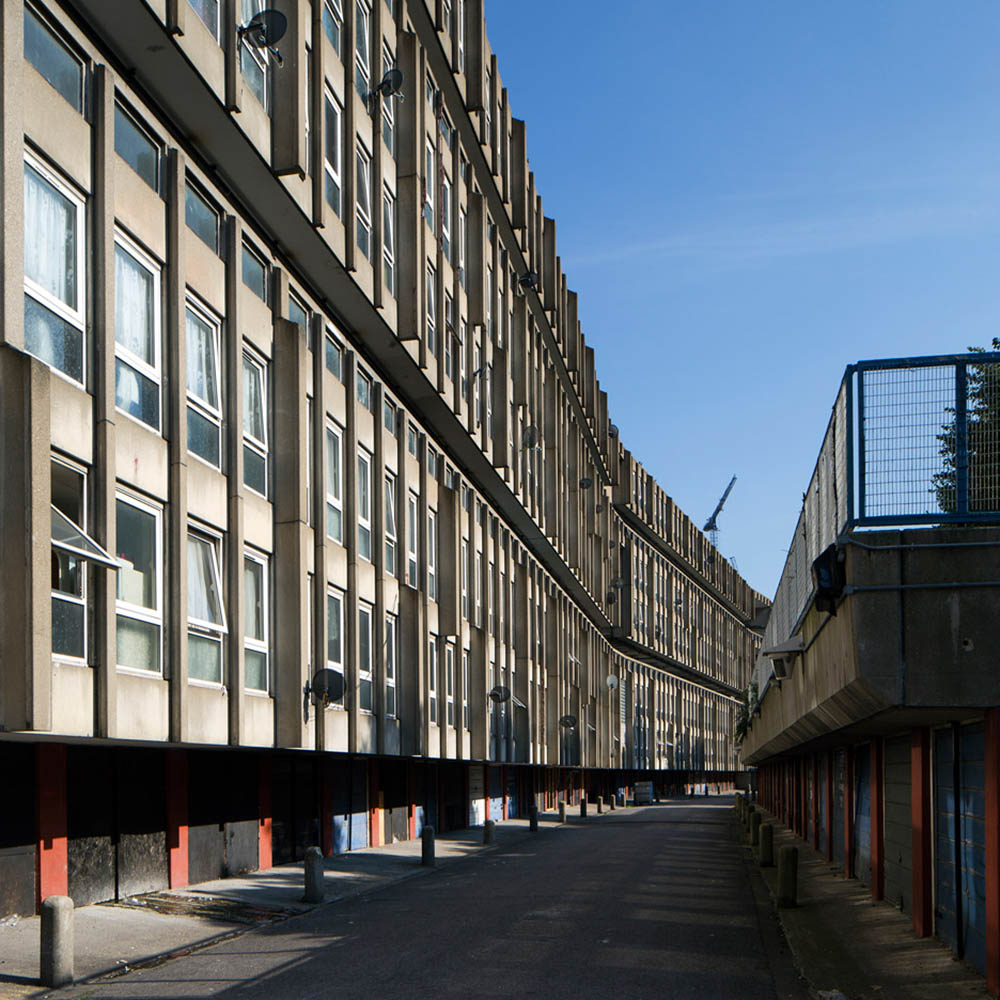Submitted by WA Contents
V&A acquires a segment from London's brutalist Robin Hood Gardens
United Kingdom Architecture News - Dec 28, 2017 - 15:29 20826 views

London's highly respected museum V&A has announced that they have acquired a three-storey section from Alison and Peter Smithson's internationally recognised brutalist housing development Robin Hood Gardens, which is currently being demolished in Poplar, east London.
The Robin Hood Gardens, designed by British architects Alison and Peter Smithson in 1972, is a very significant Brutalist architecture of UK, which arose in the 1950s in reaction to the sleek and elegant glass structures of modernism. Alison and Peter Smithson's housing complex is comprised of two sinuous exposed concrete blocks that include a central garden.

The facade configuration of two volumes features repeating geometrical patterns, which were not designed as a philosophy in that times, to rethink the relationship between society, architecture and urbanism, as well as its noise-reducing features: such as exterior concrete fins, and for its elevated walkways, known as 'streets in the sky', were intended to force interaction between neighbours.
This nationally important housing estate, also playing a role in the recognition of British architects in an international arena, come out of the culmination of their research and their innovative vision for social housing.
The three-storey segment that the V&A acquired consists of both the exterior facades and interiors of a maisonette flat, as it is conceived as a great example of the Brutalist movement in architecture.

The demolition of the housing's west block is now underway and the V&A will bring this acquisition to the museum's storage and will add to the museum's own collection later, as the V&A has preserved and exhibited large fragments of architecture in previous years, such as from the 17th-century timber facade of Sir Paul Pindar's House in Bishopsgate, London, to the gilded Music Room salvaged from Norfolk House in St. James's Square, London.
Saved in the museum's world-renowned architecture collections, this Brutalist section kept from a part of the building will remain in a public collection for future generations.
"This three-storey section of Robin Hood Gardens, complete with 'street in the sky', is an important piece of Brutalism, worth preserving for future generations. It is also an object that will stimulate debate around architecture and urbanism today – it raises important questions about the history and future of housing in Britain, and what we want from our cities," said Dr Christopher Turner, Keeper of the V&A's Design, Architecture and Digital Department.
"When demolition of their social housing project was imminent, Liza Fior (Partner of muf architecture/art), who was at the end of her year-long residency at the V&A, proposed that the Museum should collect a fragment of the building and worked with us to help secure it," said Dr Neil Bingham, Curator of Contemporary Architectural Collections.
"The V&A's acquisition of a section of Robin Hood Gardens, complete with front and back facades, will motivate new thinking and research into this highly experimental period of British architectural and urban history," Bingham added.

The first intent for the demolition of Robin Hood Gardens was announced in 2008, which was protested by several public campaigns from architectural preservationists, initiated by the Twentieth Century Society and Building Design, and many international architects, including Richard Rogers and Zaha Hadid, as well as leading architectural historians, supported this campaign to save one of London's significant brutalist buildings.
In 2015, the application to give Robin Hood Gardens listed status was rejected and demolition was approved. The site is now under development to make way for a 252-apartment much denser housing with over 1,500 new homes.
On the other hand, the other Britain's most important 20th-century housing complexes the Alton Estate in Roehampton are now under threat, according to Apollo Magazine. Inspired by Le Corbusier's L'Unite d'Habitation in Marseille, the housing estate, containing several thousand flats, maisonettes (two-storey flats), was designed by the London County Council (LCC) in the 1950s as its flagship development.
The architectural historian George Everard Kidder Smith once called it 'probably the finest low-cost housing in the world'.
All images © Luke Hayes
> via V&A
